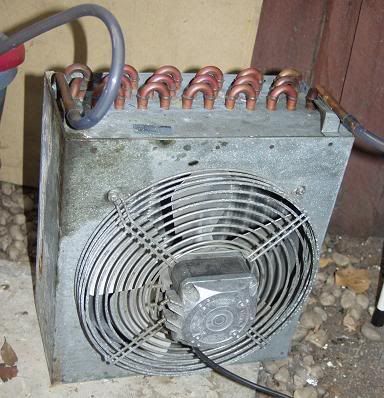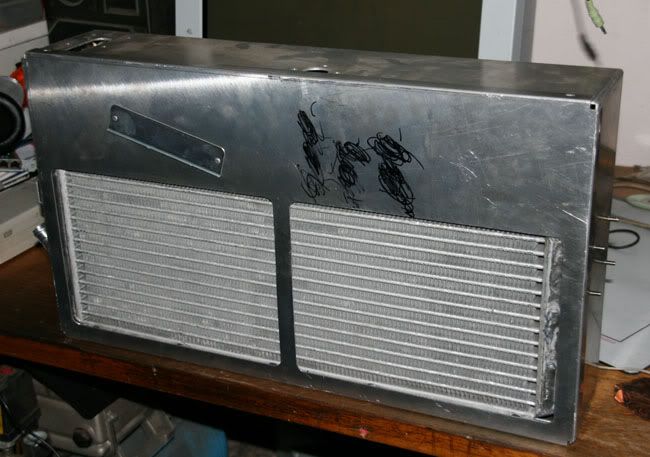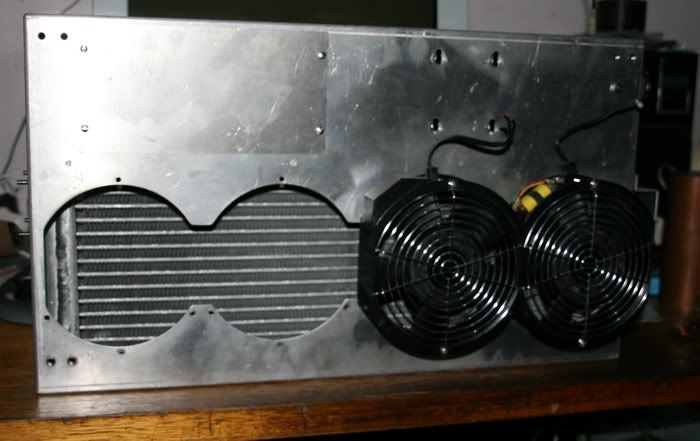
Ingenious design. Kinda out there on its own. There is nothing else quite like it, not even close. I like it.
I think decoy has got the operation more or less right.
Here's my take on it:
The J-trap at the bottom of the column coil has to be primed with plain water before starting.
When the wash first boils, vapour rises up the column and into the main vapour arm (A). It cannot go into the column coil because of the liquid barrier in the J-trap.
All the vapour going up arm A is condensed as it goes back down through the coolant tank. This is effectively the main reflux condenser, everything condensed inside this section of arm A goes back into the still.
The condensate runs down into the column coil, and all the way down to the bottom into the J-trap, where it displaces some of the liquid (plain water) already in there. The excess liquid falls out of the J-trap into the boiler and is re-distilled.
The liquid that remains in the J-trap becomes increasingly diluted to the same composition as the condensate. While the liquid in the J-trap has a lower percentage alcohol (ie higher boiling point) than both the fresh condensate dripping into it and the vapour immediately outside the J-trap, then it will not boil. This is the critical fact in the operation of this still.
As the liquid in the J-trap reaches the same composition as the fresh condensate (and hence the vapour immediately outside the J-trap), its boiling point drops to match the vapour, and the liquid starts to boil.
Some of the vapour given off by the boiling liquid in the J-trap goes out the open end of the J-trap into the boiler head space. But some of the vapour goes back up the column coil. As it comes out of the top of the coil, it reaches the junction of arms A & B. Here some of it travels back up arm A and is re-condensed, and some of it travels into arm B and into the product condenser coil. (Though it is possible that all this vapour goes into arm B.)
And, of course, the vapour given of by the boiling liquid inside the J-trap has a higher % alcohol than the liquid in the J-trap
So, in effect the J-trap is acting as a doubler, and some kind of reflux control. But I think that there is probably also some more complex stuff happening with additional refluxing going on inside the column coil as the vapour travels up it.
There is an interesting question about the relationship between the thermal properties of the condensate inside the J-trap, and the vapour immediately around the outside of it.
I suspect the feedback mechanism in this design works by detecting a very small differential in thermal mass (and hence thermal inertia), between the rising vapour on the outside of the J-trap (that is providing the heat energy), and the condensate inside the J-trap.
As rising vapour hits the J-trap, it gives up a little of its heat energy to the condensate liquid inside the J-trap, and so a little of that vapour is condensed on the outside of the J-trap.
You do not need any valves to run this still. In particular, DO NOT put a valve on arm B, that would fully seal the still. There must be a permanently open pathway to the outside (in this case via arm A and out through arm B).
The ratio of the sizes (cross-sectional-area) of the two arms (A & B) may be important.
The length and tube size of the column coil is also probably important.
The height of the open, cut-off end of the J is probably the most critical factor in tuning this still.
This design may also be fairly sensitive to power input levels, and probably cannot be run hard, so it cannot do a low wines run. This still is probably for spirit runs only.
Equilibration (of a sort) can be done on this still if you prime the J-trap with plain water. And the reflux ratio is probably fixed as well.
Using packing in arm A might give interesting results.
Can't wait to see the results.
Be safe.
Be discreet.
And have fun.




























